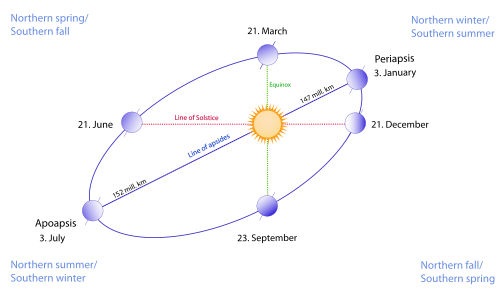“IF THE earth were 10 feet closer to the sun, we would all burn to death. And if it were 10 feet further out, we would all freeze.”
Fact or Fiction?
I have seen this posted around the internet, and in the past, have heard quite a few speakers tout this “fact” as a testament to the precision and perfection of God’s design in creation. The listeners are astounded and nod their heads in agreement to the wonder of it all.
The wonder of it all, however, is how this statement can even be believable if we apply a little reason.
If it were true that we would burn if we were 10 feet closer to the sun, there shouldn’t be any buildings taller than 10 feet. There shouldn’t even be skyscrapers, and we shouldn’t we flying in airplanes going 30,000 feet up in the air. Astronauts flying up to the moon should look like burnt bacon by the time they came down again.
Elementary science teaches us that the earth orbits the sun in the shape of an ellipse. Think of an oval-shaped fried egg sunny-side-up with the yolk slightly off-center. That’s what it looks like. That means there are months when the earth is close to the sun and there are months when it is farther away.

The earth is closest to the sun in January, a distance of 147 million kilometers. It is farthest in July, with a distance of 152 million kilometers. That’s a difference of around 5 million kilometers, certainly more than plus or minus 10 feet, so God probably gives himself a greater margin of error than most people do.
People rarely take time to verify what they read or hear, especially if it comes from an authoritative figure or is delivered in a confident manner. For example, a number of you would probably not bother checking if the figures I gave above are correct.
Note also the proliferation of email, Facebook and Twitter scams. How many companies have been victims of smear campaigns? How many people have been falsely thought to have died? How many have been tricked into sending their bank details or even cash to strangers? How many have shared those photos of malnourished children with the hope that Facebook would donate $1 for every click?
Freethought and Me
I discovered the term “freethinker” around 3 years ago through the group Filipino Freethinkers (www.filipinofreethinkers.org). At first glance, I thought the term meant that you were free to think whatever you want and nobody would bother you about it.
I later on discovered that freethinking or freethought is a method of forming ideas and opinions based on reason, logic, experimentation and observable evidence, as opposed to simply accepting them from authority, dogma or tradition. Freethinking doesn’t mean that you can think whatever you want, no matter what.
It means, rather, that you have done some research, reasoning or experimentation in formulating your ideas. It is an attitude of healthy skepticism and doubt, of not immediately believing everything you see or hear without double-checking first.
This kind of thinking emerged in modern times at the turn of the 17th century when people began to look for natural explanations at how the world works instead of holding to superstition and blind belief in people who held positions of power and prominence, for example, those in church or government.
But an ancient advocate of freethought is no less than Gautama Buddha, as recorded in the GhandavyuhaSutra , where he says “Monks and scholars must not accept my teaching merely out of respect for me, but they must analyze and check it the way a goldsmith analyzes gold, by rubbing, cutting and melting it.”
So if this appeals to you as it does to me, then happy rubbing, cutting, and melting!
Welcome to Freethinking Me.
This article originally appears in: http://www.sunstar.com.ph/davao/opinion/2013/02/22/uyboco-earth-and-sun-269510